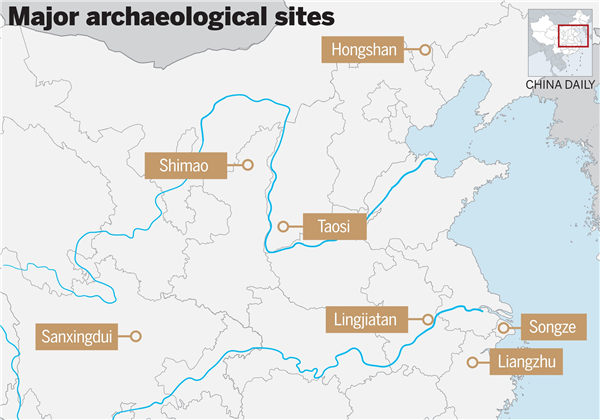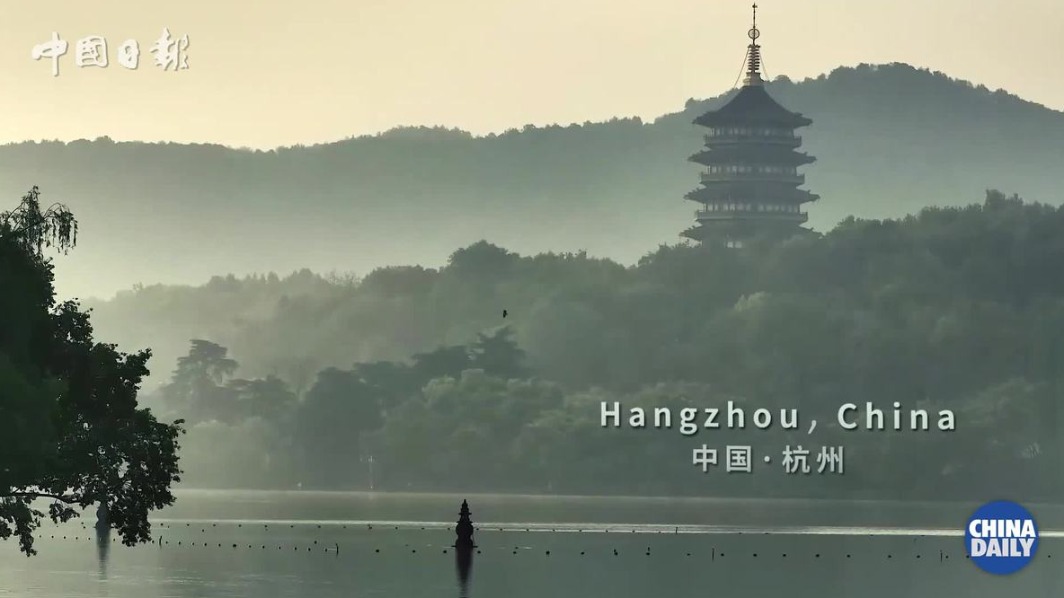Circles of influence
Major archaeological sites [Photo/China Daily]
All three prospered during the Neolithic period, but were separated by time and space. While both the archaeological sites of Liangzhu and Lingjiatan are located in eastern China, along the lower reaches of the Yangtze River, they sit on the two different sides of the river, 250 km from each other. Hongshan, a dominating regional culture found in a vast area stretching from the Inner Mongolia autonomous region to Northeast China's Liaoning province, lay much further away, 1,500 km from Liangzhu and 1,200 km from Lingjiatan.
Chronologically, the Hongshan Culture got a head start, emerging around 4700 BC and lasting until 2900 BC. The Lingjiatan Culture, a case study for China's complex societies of its era, existed between 3800 BC and 3300 BC, with its entire time span falling within that of Hongshan. The last, and the youngest, is Liangzhu. Spanning a millennium between 3300 BC and 2300 BC, it is called a civilization for all the right reasons.
"Such differences belie an important fact that, through Lingjiatan, the Hongshan Culture had come to exert a visible influence on Liangzhu," says Zhou.
The connection between jadeware production in Lingjiatan and Liangzhu has long been proven by the large amount of jade cong, yue and huang — all typical Liangzhu jade types — unearthed from the sites of the former, where the tombs of those who formed the society's elite class were crammed with such items. One particular Lingjiatan tomb excavated in 2007 contained 200 pieces of jade, together with various stoneware items and pottery.
"Where the Lingjiatan Culture ended, the Liangzhu civilization began. This is by no means sheer coincidence," says Zhou.
-
'Nice' to meet you, Hangzhou
May 6, 2024




